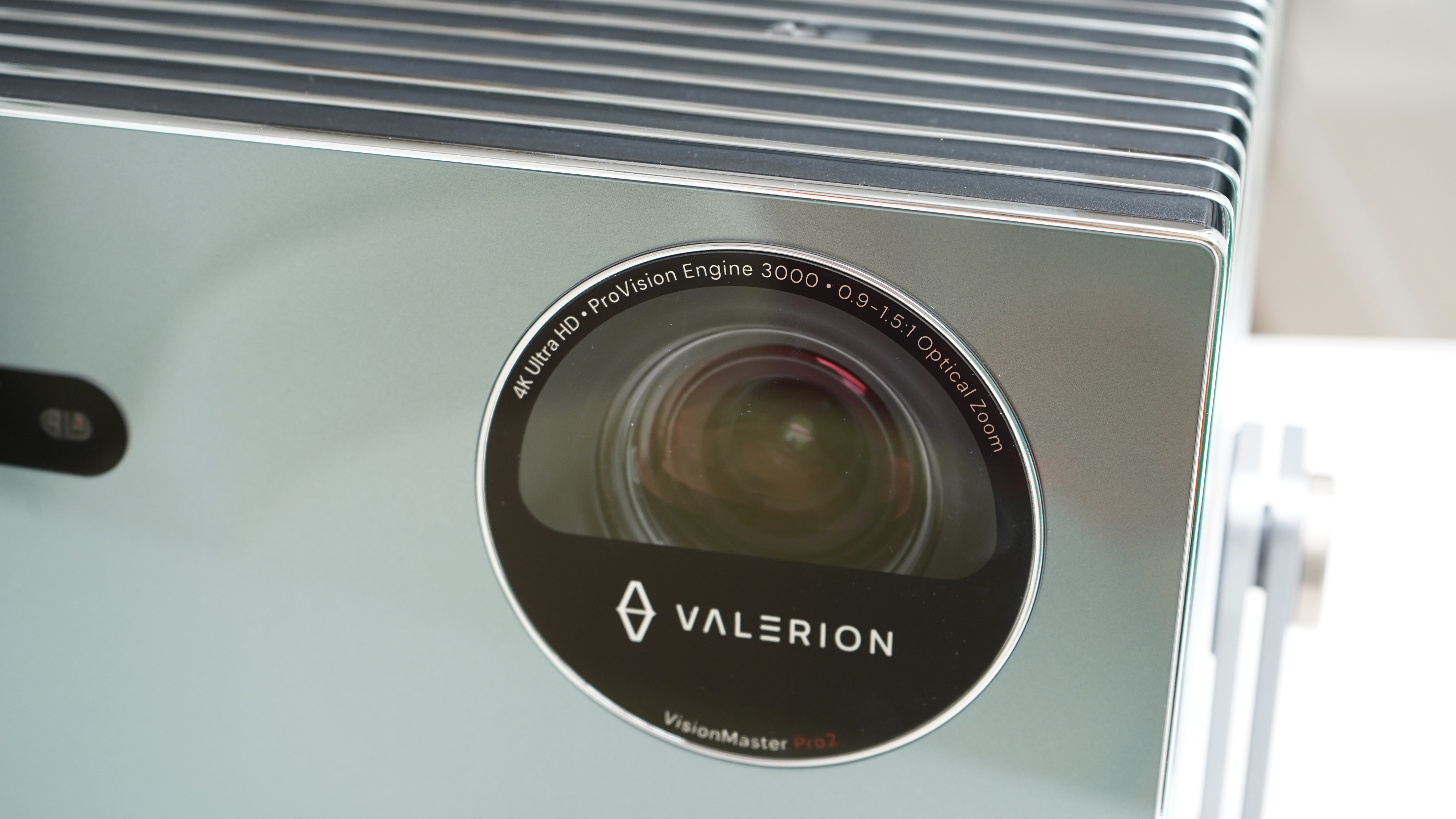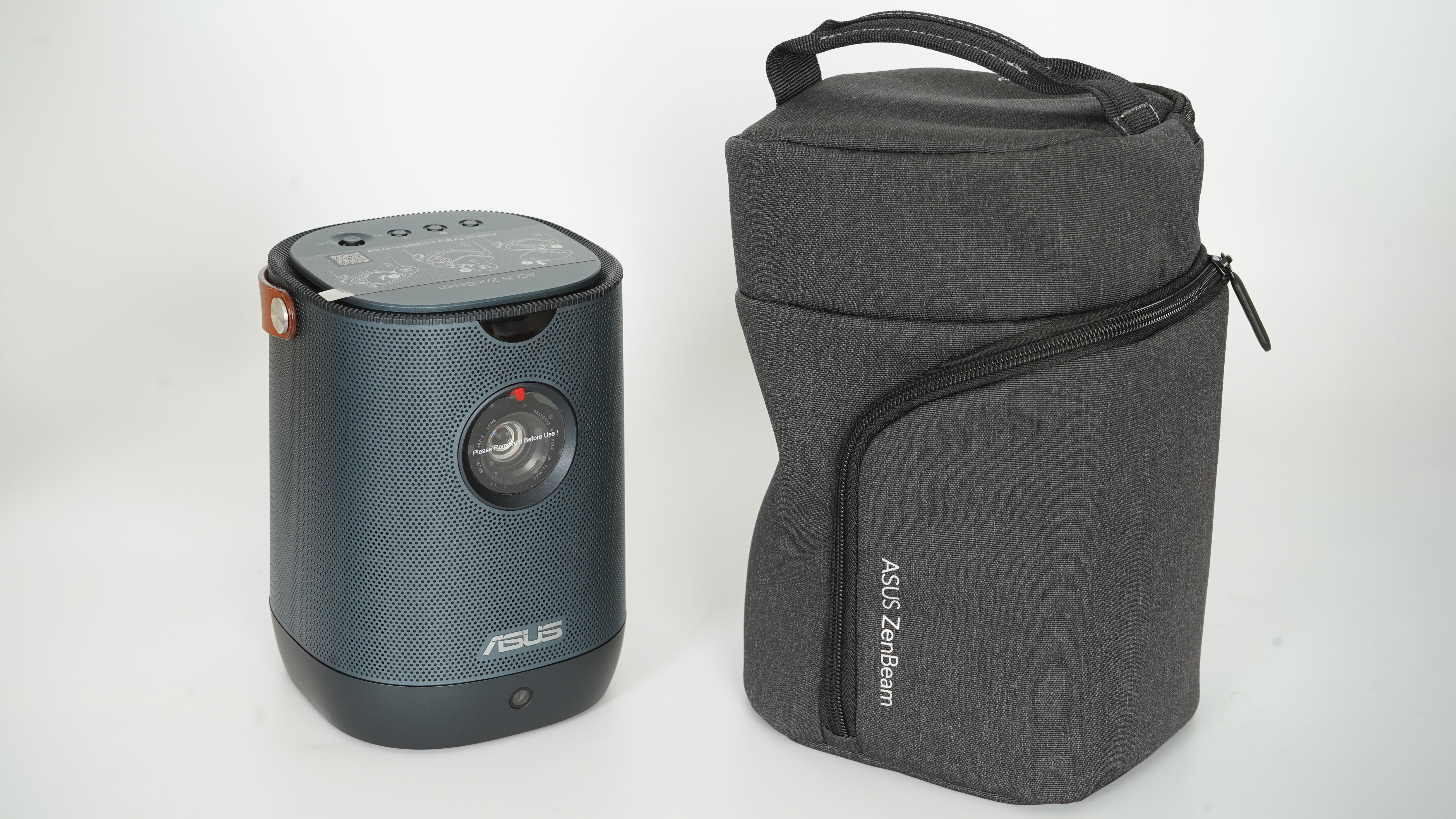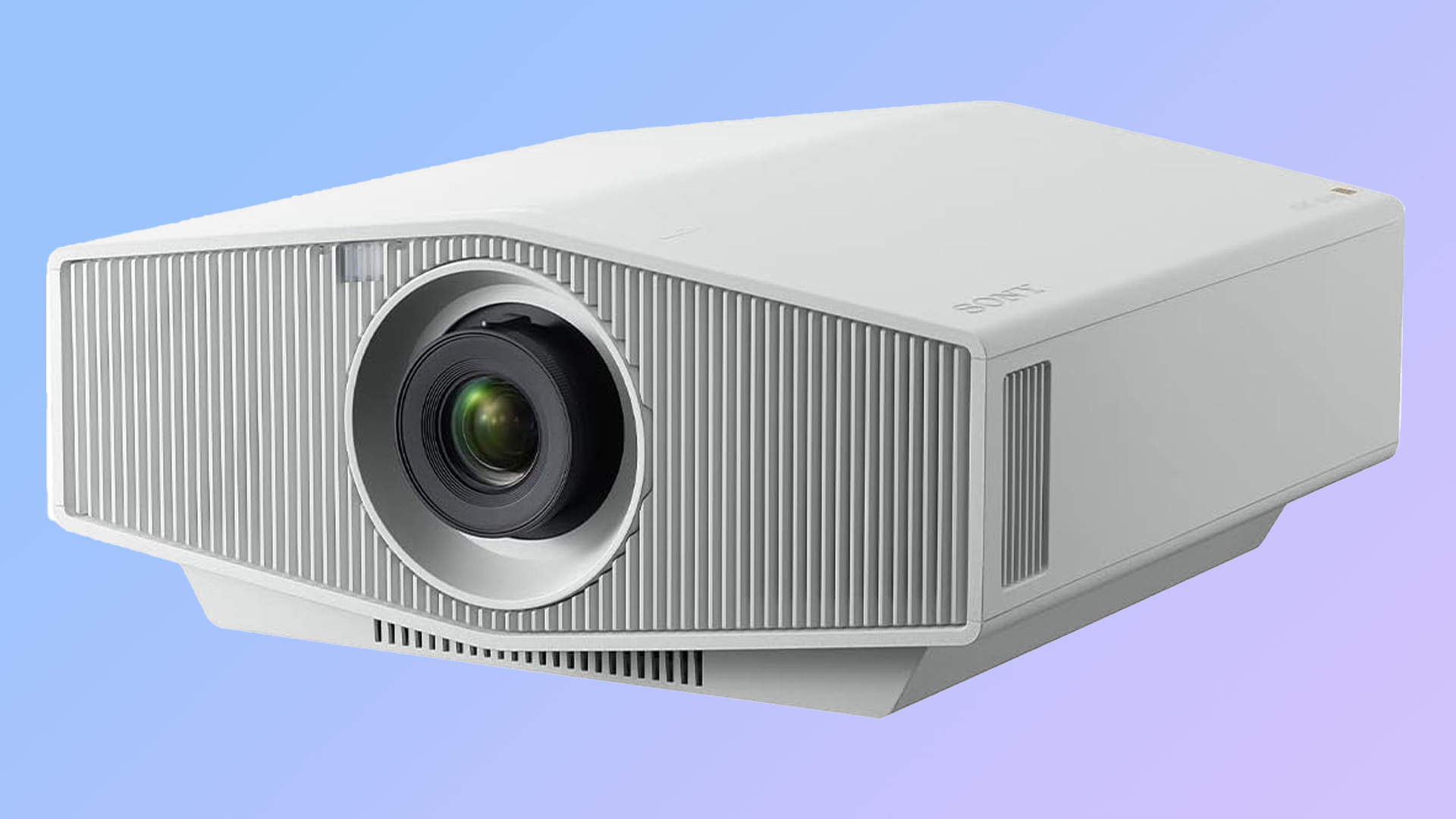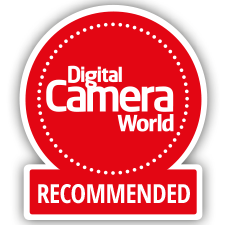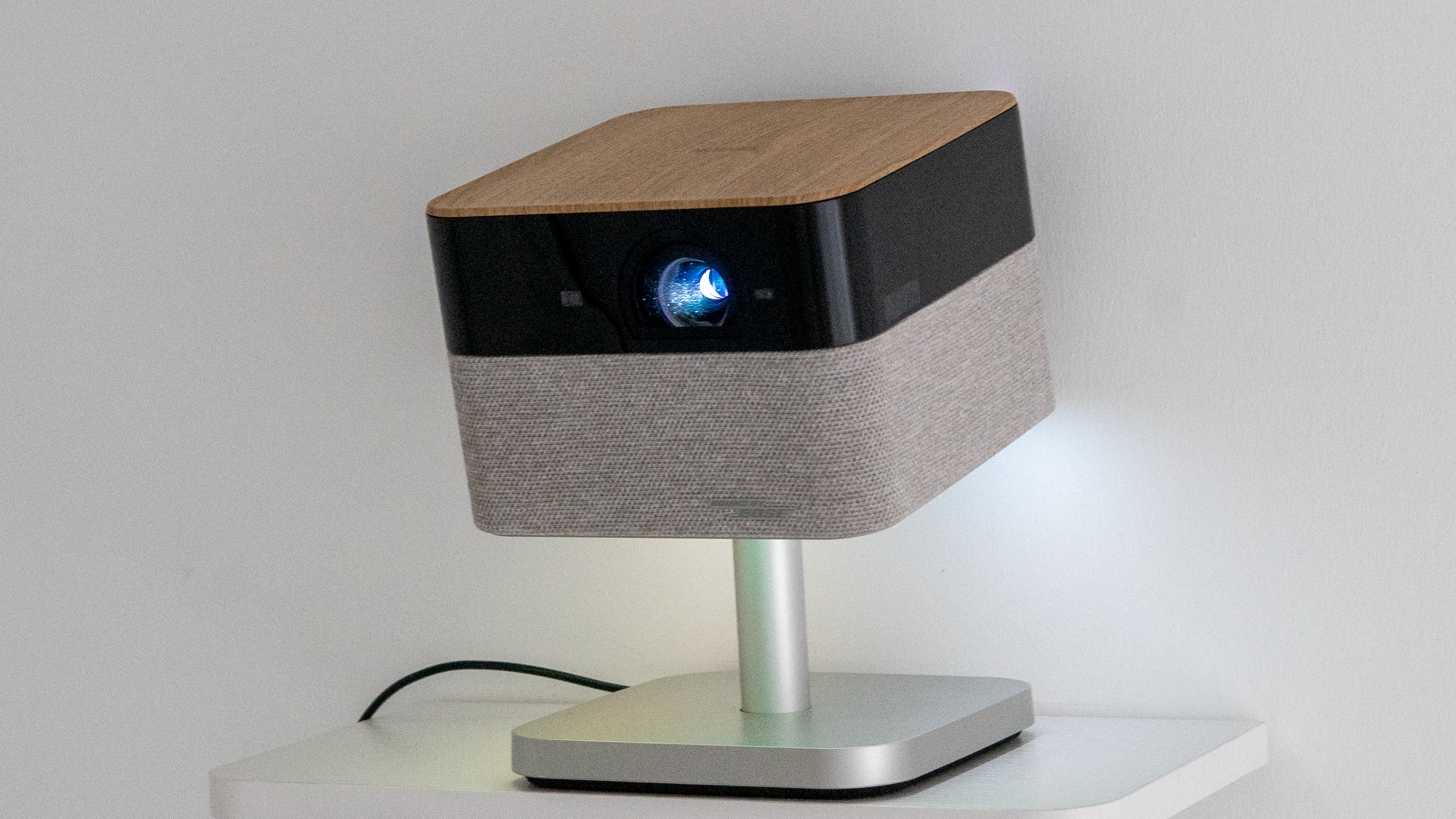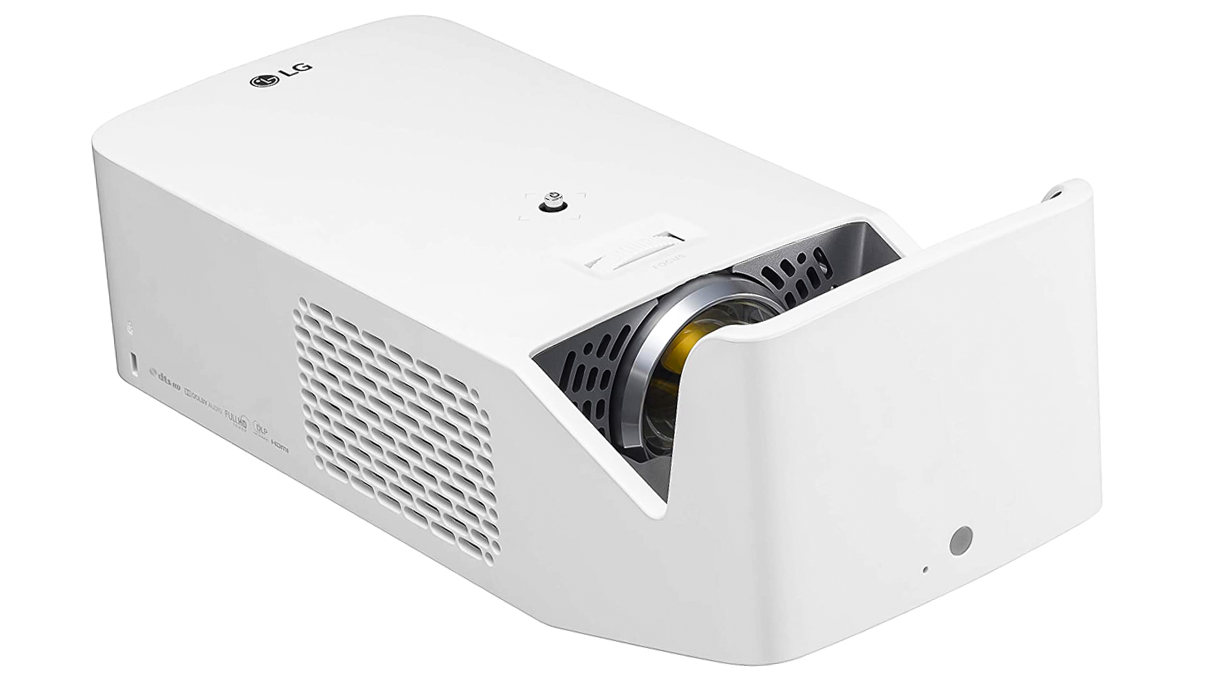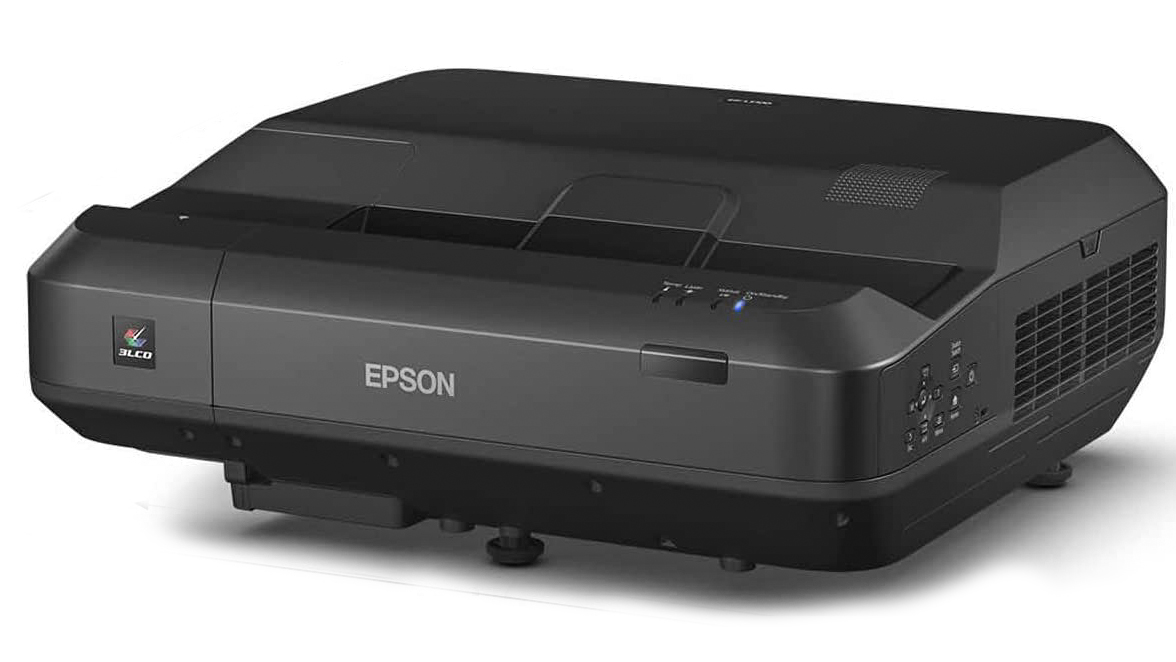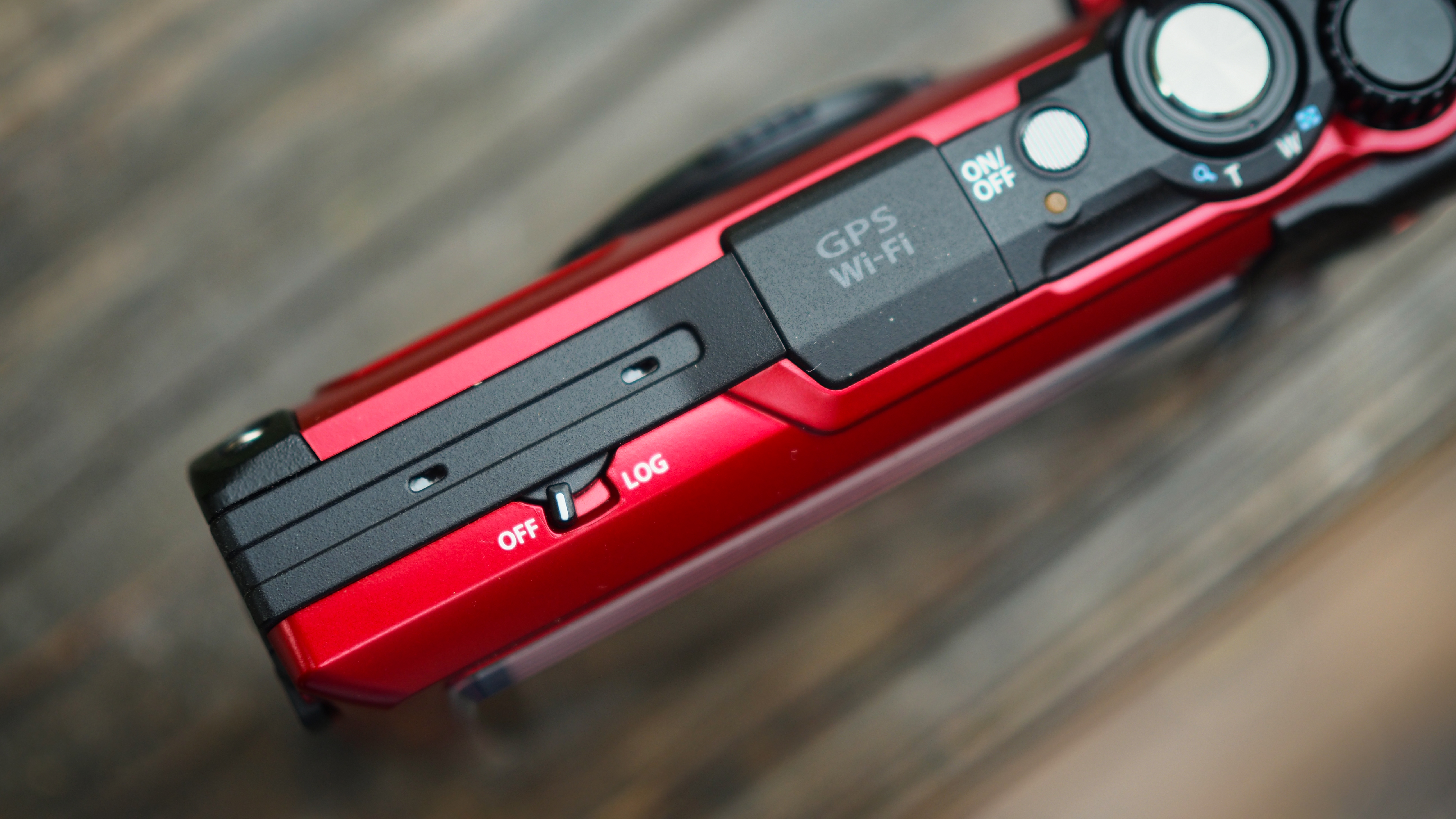The best projector for video at home, outdoors and in the office
The best projectors can help you show off pictures or movies in style, whether you’re relaxing at home, presenting in the office, or watching in the great outdoors
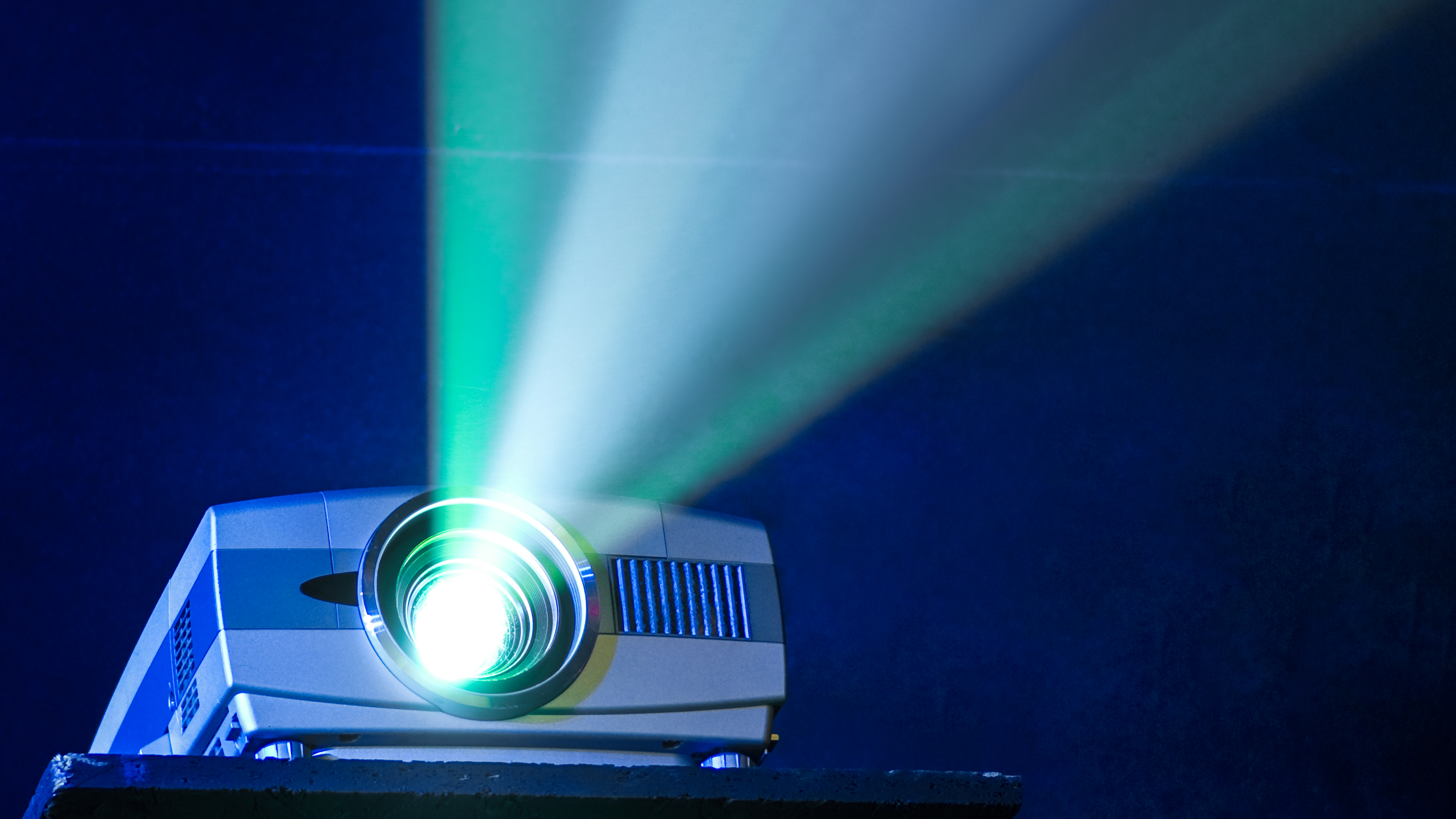
In the last few years (the few months even) the quality of projectors has improved, and the prices fallen even further. Phones have stayed much the same, but the arrival of portable projectors designed to watch movies (and photos) on screens up to, or over, 200-inches (or photos) at home and away – some with built-in batteries – have actually changed things in the projector world.
As a result, I've taken a new look at this guide, and some new projectors, thinking about why I'd want a projector now. For me more of those uses are in the home and small office – playrooms, garage conversions, in-home movie theatre and even garden cinemas. If you're making you're own movies, you should be able to do your own screening, and perhaps have the best ever video edit suite. Gaming is another reason that speed is more of a factor than it used to be.
Because of the cross-over between film fans and creators, projectors are a great alternative to another monitor that can really make your home editing setup feel a lot more Hollywood! You'll find something for almost any budget.
Innovations have made projectors easier and often automatic to set up – both in terms of image AND accessing your media. Wireless connectivity is often an option – don't worry, I'll mention which will still connect via HDMI (high-quality content fans will often still want to own the media with the least compression, and that often still means cables).
Below the projectors, there is an FAQ about the space you'll need (don't worry, there are solutions for every room, like short-throw), but for now, let's get started...

When he's not flying drones or examining other tech, Adam would also love his home to be his cinema (like most geeky blokes) so has been investing in ever more sophisticated sound systems and displays for the last 30 years. He especially loves the pop-up joy of portable projectors.
The Quick List
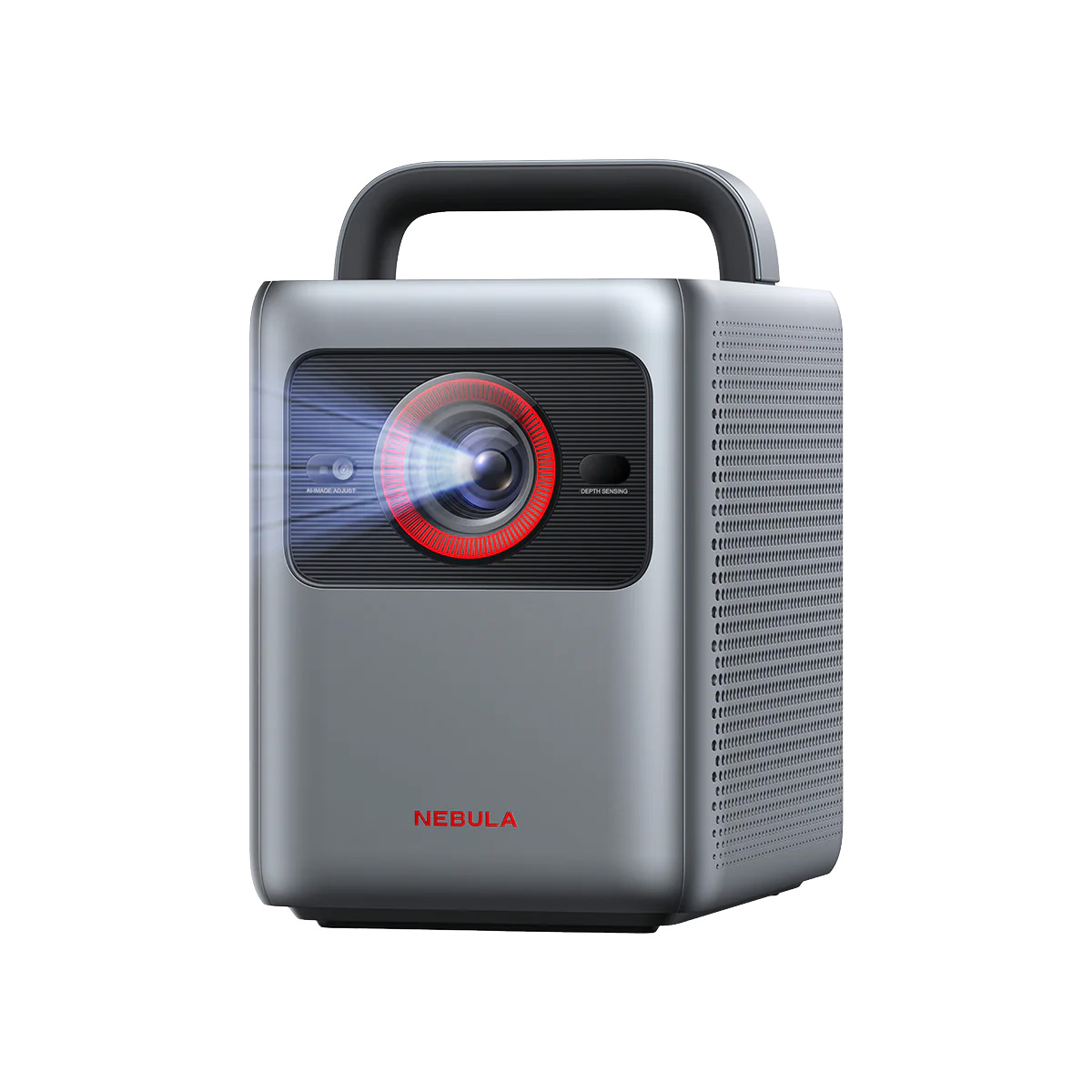
A true native 4K Dolby-Vision projector that's easy to move from place to place, fully wi-fi equipped with the latest smart-TV innards, and doesn't even cost the earth given the spec!
Read More below...
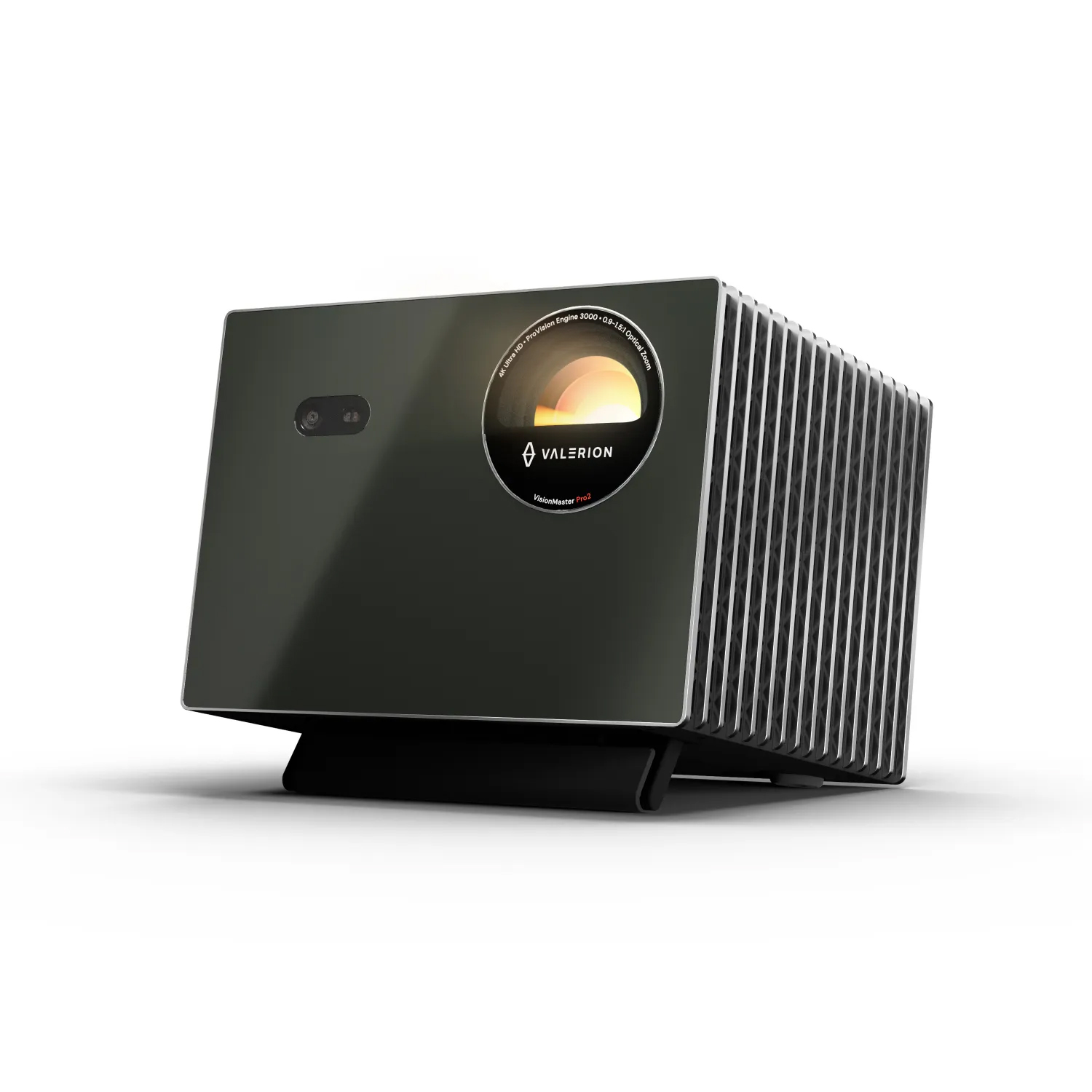
A bright, powerful 4K native (depending on your definition) cinema projector which costs rather less than you'd expect for a sharp, HDR10+ image.
Read more below...
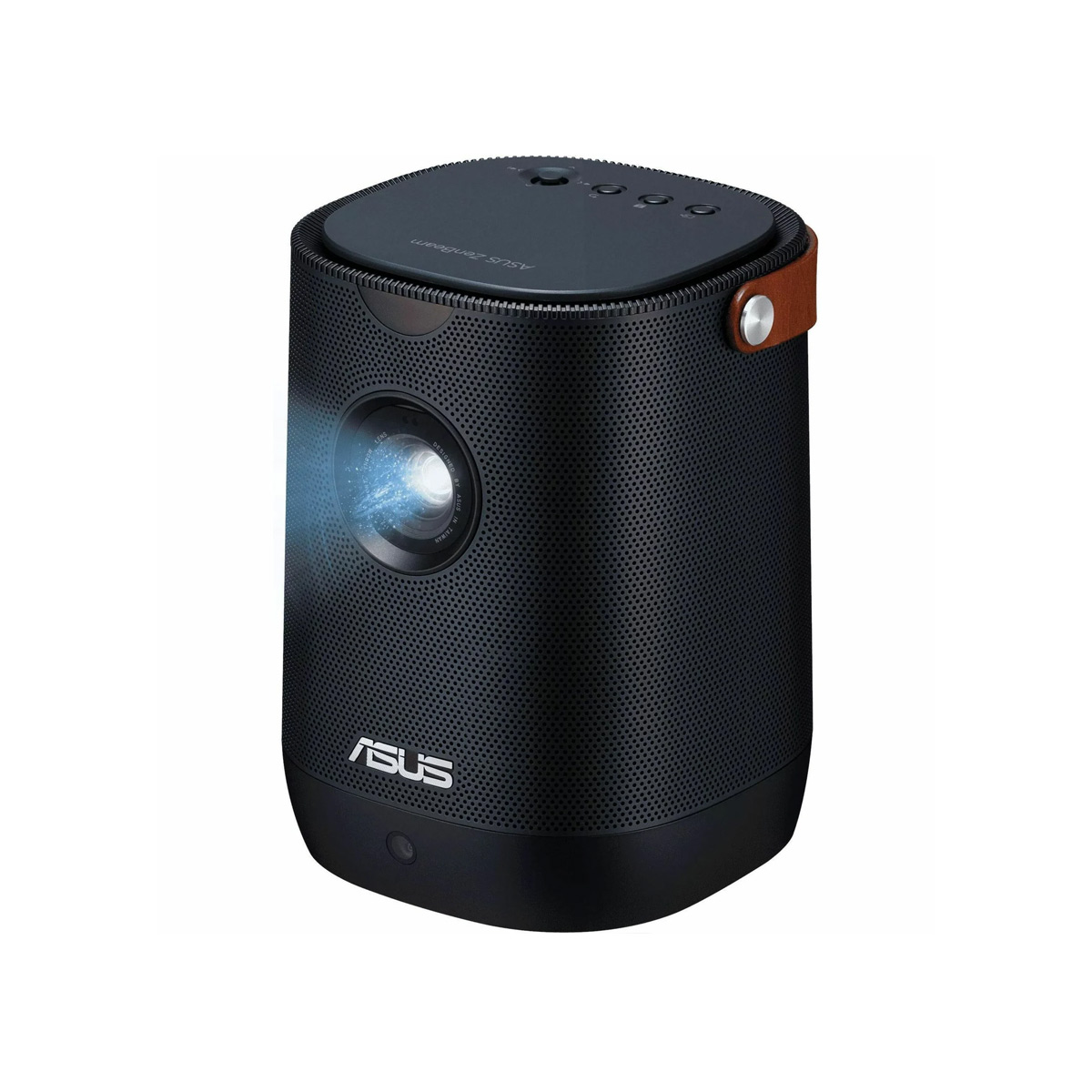
Not much bigger than a drink can, with battery power for anywhere use, looks you would like to carry, and the quality and tech to make that worthwhile!
Read more below...
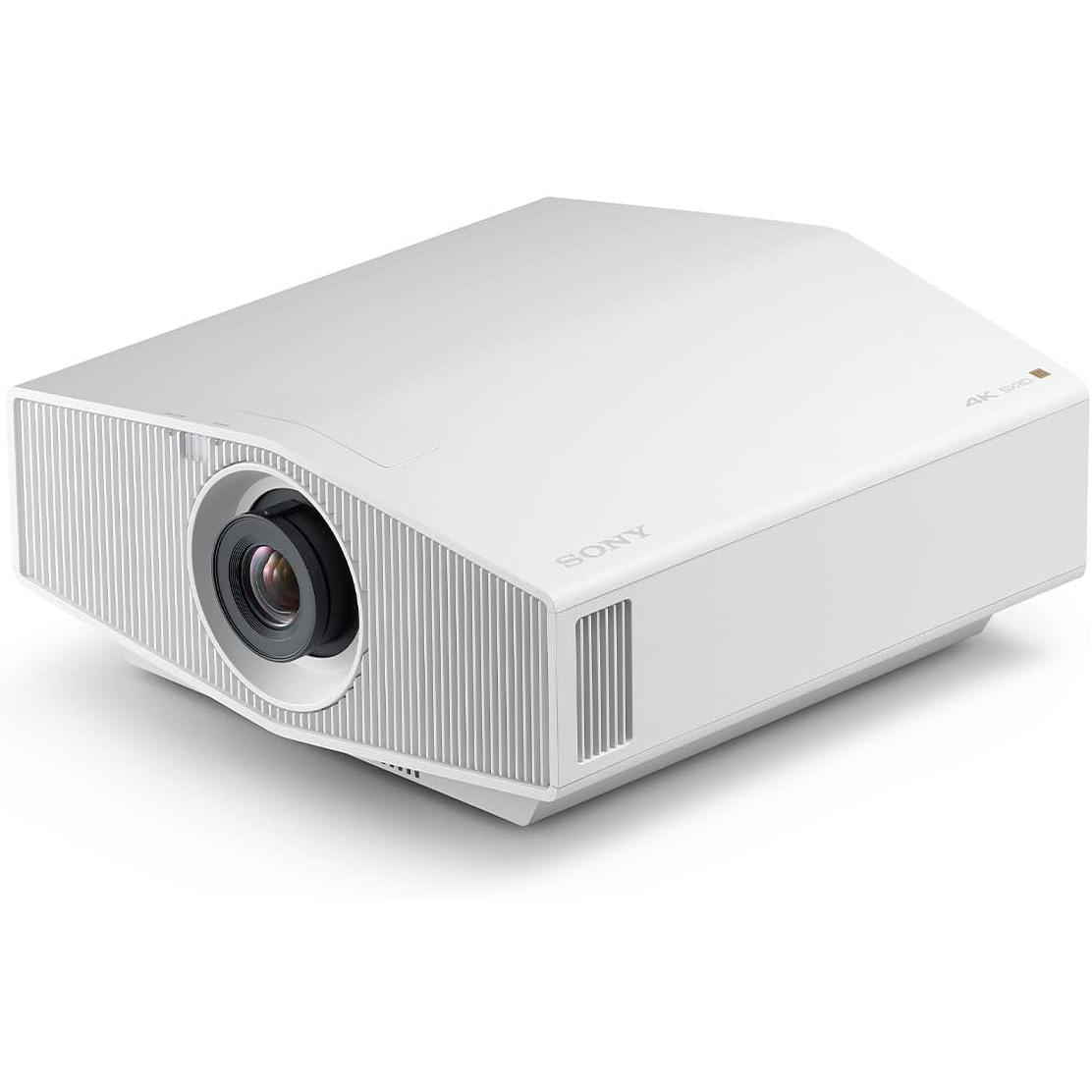
Sony are terrible at naming, but brilliant at display tech. This is actually their 'budget choice', but it's a 4K native laser projector you can build a home cinema around.
Read more below...
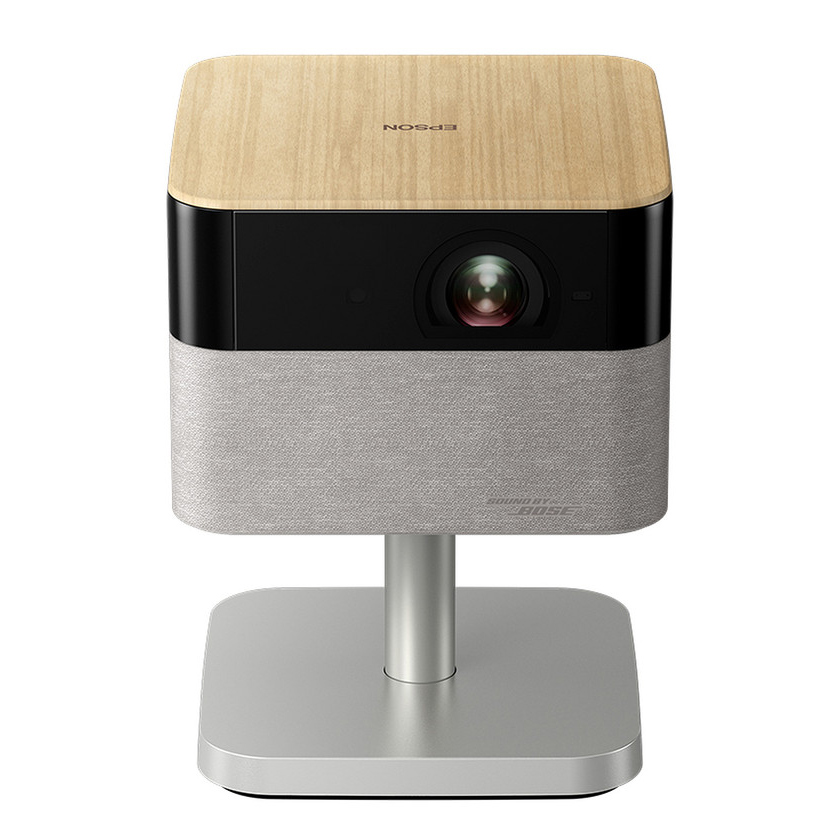
Award-winning design for the coffee table, with a tiltable projector and built-in speakers, plus a chic illumination system.
Read more below...
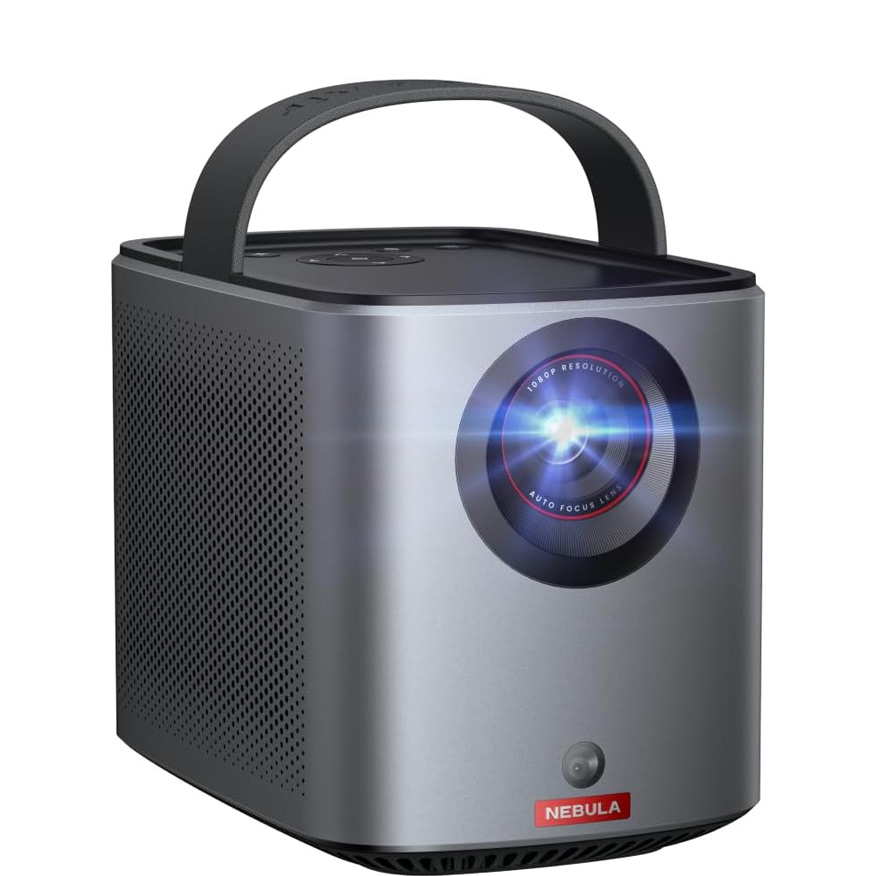
This is good value for what it is (but not a cheap toy), has a built-in battery, and is still a bright 1080P projector you can take anywhere.
Read more below...
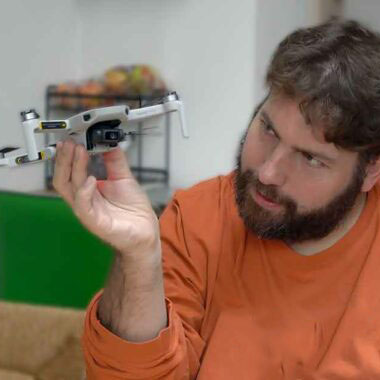
Adam is DCW's Managing Editor and has been writing, editing and publishing about color & movie tech for decades. He's also a drone cinematographer who has worked in Hollywood, meaning he not only wants to make great video, but has time to watch movies while waiting for the weather to change!
Best projectors
Why you can trust Digital Camera World
Best overall
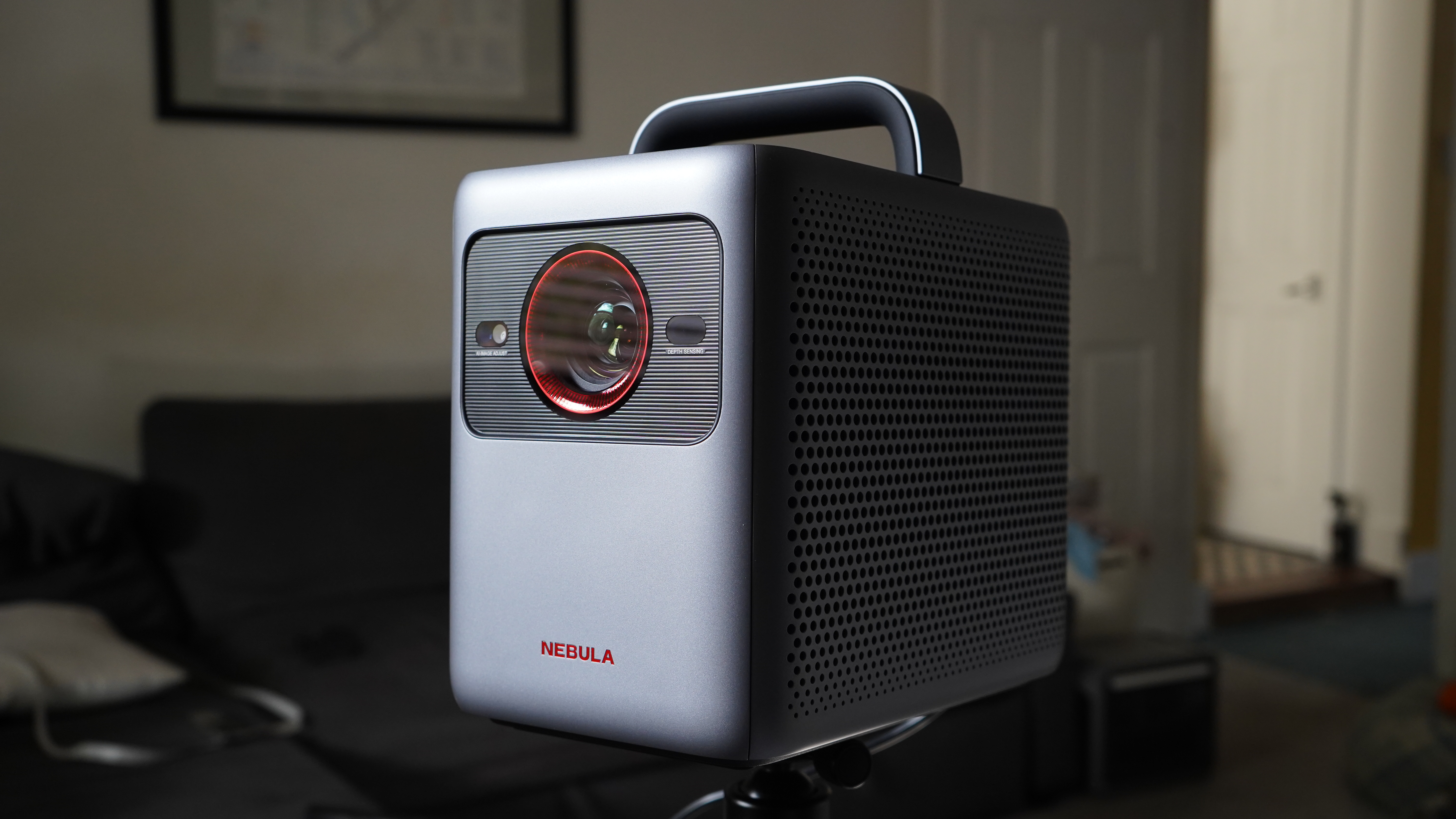
Specifications
Reasons to buy
Reasons to avoid
✅ You want a real 4K picture: The sharpness of native 4K plus Dolby Vision is a significant step above 1080P projectors.
✅ You want a straightforward experience: Google TV combines with in-build sensors makes using this easier than many projectors in terms of set-up and function. All you need is wi-fi.
❌ Maximum brightness matters: This is better suited to rooms away from windows or, ideally, set up as cinemas.
❌ You want an adjustable throw: The projector has a fixed throw, so you need to be a few feet from a wall to get a big screen size.
If you're looking for a device which sits in an ideal spot between image quality, value, and portability then the Nebula Cosmos 4K SE might be the answer. Based on a 'Hybrid Beam' tech which adds some laser goodness to a DLP projection system, what really makes this stand out from other devices I've tried is how well-rounded an experience it is (and I'm not just talking about the elegant but robust housing).
Released for the fall of 2024, this is actually a follow-up to the similar-looking 2022 Cosmos 4K with a slightly lower brightness but otherwise a raft of improvements like more modern Google TV tech. That means the Netflix app is pre-installed and it's a breeze to add other streaming services like Apple TV, Prime, YouTube. Many modern projectors do this well, but this has a fast enough processor and more comfortable integration with the projector's own software which succeeds in feeling natural.
There are other aspects that have a hint of premium too. The remote is Bluetooth, as are many, but it also has backlit buttons – nice. The handle is solidly integrated but good-looking, too. Take this to a friend's for the match and they'll be impressed.
It's not without a few compromises compared to a true laser projector though, and it is best suited to movies in a dimly lit or darkened room. Here, though, it shines. The high-quality 15W Dolby sound speakers and relatively low background noise from the system make for an overall volume that doesn't feel too much of a fuss to use. It's also notably cheaper than the XGIMI Horizon Ultra 4K which uses a similar hybrid projection tech but lacks the convenience of Google TV.
Read more: Check my full review with in-use images
Features ★★★★☆ | Good of-angle modes and copes well with imperfect conditions in 'the coffee table test' |
Design ★★★★☆ | The handle design, seemingly borrowed from lighter devices, makes this very luggable and overall it's sensible if a but tricky to put on a tripod. |
Performance ★★★★☆ | The Quad-Core ARM processor is quick enough for Google TV OS. |
Value ★★★★☆ | Nebula's projectors have good software, and the image seemed better than the contrast ratio suggested. |
Best value projector
2. Valerion VisionMaster Pro 2
Our expert review:
Specifications
Reasons to buy
Reasons to avoid
✅ You're looking for a home cinema: Resolution and brightness are premium, while cost is very competitive
✅ You might need flexible positioning: An optical zoom is an unusual but useful addition when re-positioning and retaining resolution
❌ Adjustments a little tricky: Manual setup steps (if you don't go for auto) could offer more subtle steps for focus and screen size.
❌ You don't have a screen: A premium projector like this does benefit from a screen (and a clear view of it) – if only for auto set-up!
A few years ago I'd have come to this review a lot more sceptical, expecting to see brands like Sony and Epson dominating a list like this, but now I know better, and this is a great example. This is a premium product – it looks and feels it, and has the brightness that means it has no problem delivering 110% Rec.2020 Color Gamut.
It also has features you're unlikely to find on brands you've definitely heard of – like an optical zoom that'll help you set the screen size to an insane 300-inches (I will tell you now I did most of my testing on a 100-inch projection screen).
The way it impressed me is by holding enough processing power on board to deliver Enhanced Black Level (EBL) image processing. This is how the projector can claim a contrast ratio of 15,000:1 (rather than about 4,000:1 native), and offer dynamic tone mapping for HDR, Dolby Vision & HDR10+ support. All of this is premium stuff, yet here the pricing could be confused with something much less visually impressive.
The device also boasts a responsive game mode (4K/120fps is on offer) with input lag as low as 10m/s, and I can't say that the fan troubled me at all
The projector is also equipped with an easy-to-use version of Google TV, so using it is no harder than my Sony TV (my Sony Bravia TV, which is a few years old, is a bit laggy too – not a problem I experienced here).
Read my full VisionMaster Pro 2 review
Features ★★★★★ | Points scored here for brightness, HDR, good games modes and black level enhancement (that actually works). |
Design ★★★★☆ | Love it or hate it design, but very practical. |
Performance ★★★★☆ | Little evidence (but not none) when it comes to rainbow effect and good built-in sound. |
Value ★★★★★ | The image quality is very striking at this price, while the feature list is full too. |
Best Battery Portable
Specifications
Reasons to buy
Reasons to avoid
✅ You want to project anywhere: It is bright enough to put a good image on most walls, and a built-in battery is convinient
✅ You don't like mixing chargers: The fact it uses USB-C was one of the nicest aspects of the overall excellent industial design for me
❌ You watch long movies: You'll either need to turn down the brightness, or take a battery pack.
❌ You are vegan: I'm pretty sure that's a real leather handle.
Pocket projectors were all the rage when flatscreens cost more than most folk spent on food every month. Now you can still find low-quality devices around to play your phone output, but the market has matured a bit too – with a few decent offerings, like this, able to present a full HD image anywhere near wi-fi (or Ethernet) for an internet video source (or, of course, any of your normal devices).
To get the best out of some projectors, you need to fit a Chromecast. Not here; there is a bay for an Android TV box and a matching Android TV 12 (post-update) device in the elegant packaging (presumably in other territories a more appropriate device can be sold instead). This give you good-quality app access to all the major entertainment platforms without any dangling components.
Indeed the whole design is thoughtful and made with elegant plastics and (sorry vegetarians) a leather handle. The battery will provide 3.5 hours of projection, so most films should work, and the built-in speaker is okay, if not amazing. The video is 400 lumens (or 960 LED lumens, as Asus would prefer you to count it) and one of the best images I've seen in the category. Gaming is feasible too.
Read my full review of the ZenBeam L2
Features ★★★★★ | Battery portable with built in speaker, good looks, and sensible charging system (USB-C). |
Design ★★★★☆ | Good looking device with a nice bag, but the self-assembly process (adding your own TV card) seemed odd, even if it took only a moment and used USB. |
Performance ★★★★☆ | That the battery can last our a movie is a winner in this category for me. The true 1080P image impressed me. |
Value ★★★★☆ | Value is difficult to judge because on one had it is pricey but the quality and battery both rank highly. |
Money no object
4. Sony VPL-XW5000ES
Our expert review:
Specifications
Reasons to buy
Reasons to avoid
✅ You want real 4K movies: A laser projector should last many hours,
✅ You're building that home cinema: If you're going to do the job (and don't mind not having 3D movies), why not go for it?
❌ You want portability: Manual adjusment (and fiddly at that) is so old-school.
❌ You want 4K 120Hz: Yes there is a 120Hz gaming mode, but only at 1080P
Sony's laser projector is the first for the company to bring 4K laser projection to a price this low which, in this guide (which focuses more accessibly priced devices) might seem shockingly high. Sony, though, is a master of imaging tech and the CTA aren't arguing with their claim that this is 4K (unlike some attempts to create accessibly priced 4K laser projectors).
So, why doesn't it cost a 5-figure sum? Well, Sony has kept the X1 Ultimate system from their flagship, so no worries there, and the system includes Sony's brilliant Dynamic HDR Enhancer processing. Sony's
My friends at What Hi-Fi also gave this device the full 5 stars, and who am I to disagree? Sure, there is no support for tech like HDR10+ or Dolby Vision as there is in my top pick, so that is ostensibly better value, but this is a superior technology and you can see that on the screen.
Would I choose this for my own projection purposes? No, because I like something I can put on the back of the car and use in other places, or just take between rooms (perhaps even outdoors), but if I'd been allowed to build a man cave home cinema this is where I'd be looking.
Most eyecatching
Specifications
Reasons to buy
Reasons to avoid
✅ Looks matter: Best-looking coffee table projector on the market!
✅ Single-column design: Smaller and more portable than other gimbal designs.
❌ You want remote power: It's not difficult to move, but it doesn't have a battery so you'll need to run a cable.
❌ Value for money is a factor: By recent standards, this is a pretty average device, but from a good brand.
The Epson Lifestudio Flex Plus 4K manages to look pretty special, added to even further by the color-changing lights around the rim of its base that you can change with a tap of the top. It's also an impressive projector within reasonable limitations – a maximum of 150in image, a gaming mode, and 4K.
Handily, there is a 2 x 5W Bose speaker system built-in which means you get very good clean audio indoors or out with your videos. There is Google TV on board too - so you can hook up to Prime Video, Disney+, Spotify, YouTube and other apps to ensure you always have something to play wirelessly without the need for other devices.
The slight compromise with this projector is the relative brightness; at 1,000 lumens it's a little behind some others at the price level, but in exchange, you're getting something it'd be a lot easier to show in front of visitors. In the kind if scenario most home cinema or home gaming might take place, this is unlikely to be an issue, and the image will still impress.
The design is littered with premium touches, too, like the single-column in the center being hinged so the whole projector can just lean back and project against the ceiling without a massive gimbal around the outside like so many other designs.
See my full review of the Epson Lifestudio Flex EF-72
Features ★★★★☆ | Good quality picture with a range of adjustments, and clever portability features. Would have preferred true native 4K, but this 4K looks good. |
Design ★★★★★ | The most beautiful coffee table projector I have ever used, with lots of small refinements as well as the overall design brilliance being visible all over. |
Performance ★★★★☆ | Though the Epson picks up high performance marks for adjustment and quality, the sound could be a little better (always the case in a box this size). |
Value ★★★★☆ | If you're paying for style, this is a fine choice. If you're looking for the maximum brightness for the spend, there are other options. |
Cheap Battery-powered
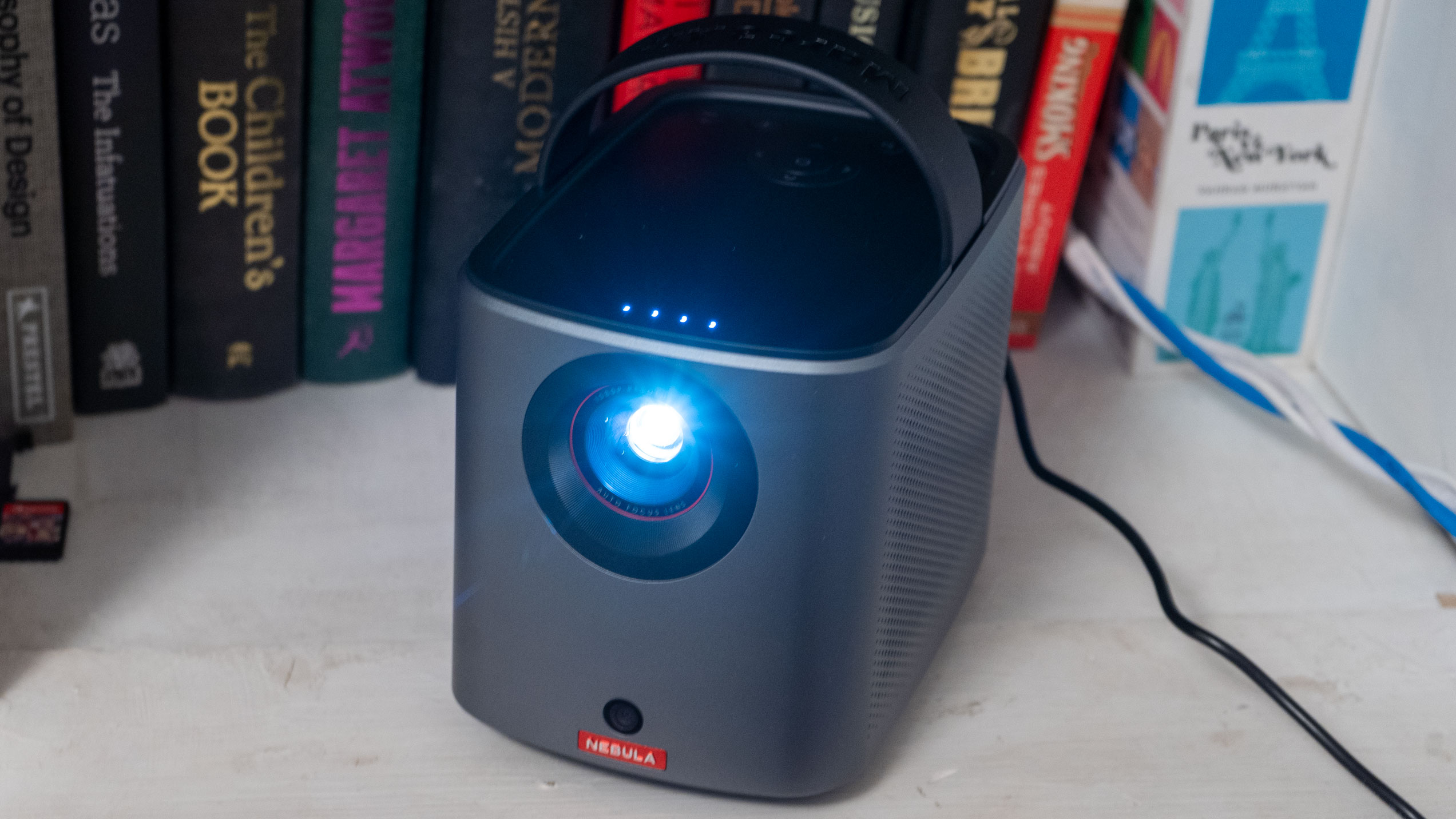
Specifications
Reasons to buy
Reasons to avoid
✅ Cost is a factor: This is a significantly cheaper battery projector than some on this list (ahem Asus).
✅ You want the 'TV' experience: The Google TV operating system is fast and easy to navigate.
❌ You find power bricks annoying: When you do need to run on power or charge it, there is an old-school power brick.
❌ You don't trust AI to set up your viewing: Nor do I. Don't worry, you can turn it off. 😀
I'm a big fan of the Nebula Cosmos 4K projector's no-nonsense form factor and the brilliance of the Asus ZenBeam L2. This seems to draw on the rugged common sense of the former – it's as robust in the flesh as it looks in the pictures, and it boasts an internal battery so you can use it away from mains power for the length of a movie. Well, anything except a James Cameron one.
It's difficult to pin down, but this is definitely one of the machines that makes you feel that 1080P is enough to enjoy a movie, and the Google TV OS is a more sophisticated and flexible way to use a projector than most modern smart TVs.
The autofocus and key stoning are bolstered by AI obstacle avoidance so, in theory, it will shrink the view rather than project onto a picture hung on the wall. This was a bit of a meh feature for me, but the 8W stereo speakers did the business.
The DLP and LED system is bright enough, and my main reason for recommending this below the ZenBeam is that it needs a dedicated power brick rather than a USB-C connector (slightly reducing the portability). It is cheaper though (and, to be honest, the OS is better).
Read my full review of the Nebula Mars 3 Air
Best short-throw
7. LG CineBeam HF65
Specifications
Reasons to buy
Reasons to avoid
✅ You need to be close to the wall: You can set it on a coffee table next to a white wall; a lot easier than most projectors.
✅ USB stick: Simply play files from USB.
❌ You worry about damage: The mirror is exposed and you might need a replacement from LG if an accident should happen!
❌ Expensive for 1080P: There is an extra cost for the cunning desing
Offering a sharper image than many rival Pico projectors, LG’s Minibeam UST (Ultra Short Throw) LED projector is great for busy rooms. You can put the projector extremely close to the wall or screen you want to show your video on, without any issues. So no need to worry about people and furniture blocking the view, or casting shadows.
You need just 38cm to cast a 100-inch display. Move it 16cm from the wall and you get the equivalent of a 50-inch display. If you want something more dramatic, move back to 60cm and you’ll fill a wall.
Other than the need for mains power, this projector also offers wireless operation - connecting to your laptop or smartphone via Bluetooth. And if you can't do that, you can also simply plug in a USB stick.
Still, though, is my experience, if you have a white wall. A properly flat one, mind, perhaps not a weird old cottage, and this tech will overcome a lot of the objections about projector setup from family members more concerned about the aesthetics of the home than the 'experience' of movie night! (You know who I mean!)
Best for big venue
8. Epson EH-LS100
Specifications
Reasons to buy
Reasons to avoid
✅ You want a (fairly) portable short throw: Space matters!
✅ You want to fight the light: It will work in reasonably light spaces
❌ You want 4K: It's impressive, but don't fool yourself into thinking that the high price is the same as 4K; you're paying for the shot throw and the laser.
❌ You don't like the look of a printer: I mean it really does look like one, right?
Not everyone will have room for a conventional projector, but that doesn’t mean you can’t supersize your images. An Ultra Short Throw model can be positioned just centimetres from a wall or screen, and still cast a huge image; 6 cm from the wall for 70-inch screen (though, in fairness, if one side of the box is 6cm from the wall the other side is nearly half a meter away!)
Epson’s EH-LS100 is one of the most advanced UST projectors out there. With a laser light engine, it offers ease of use and longevity, and is amazingly bright at 4,000 lumens, more than bright enough to be used in moderate ambient light. That’s because it’s based on the brand’s EB corporate UST projection range. This also explains its size. This is no compact, and it’s a bit on the noisy side!
The resolution is Full HD, not 4K, so this isn't cheap, especially by modern standards. There are three HDMI inputs, as well as VGA, USB and composite video. The projector works from a distance of just 6cm, but we could effectively fill the best part of an entire room wall from 48cm.
An LCD projector, it uses a T 0.67-inch 3LCD device with a 16:10 aspect ratio. Contrast is rated at 2,500,000:1. It’s perfect for clubhouses and larger rooms. Oh, but if movies are your main goal, do get a proper sound bar. –the 16W speaker is serviceable
Generic home projector
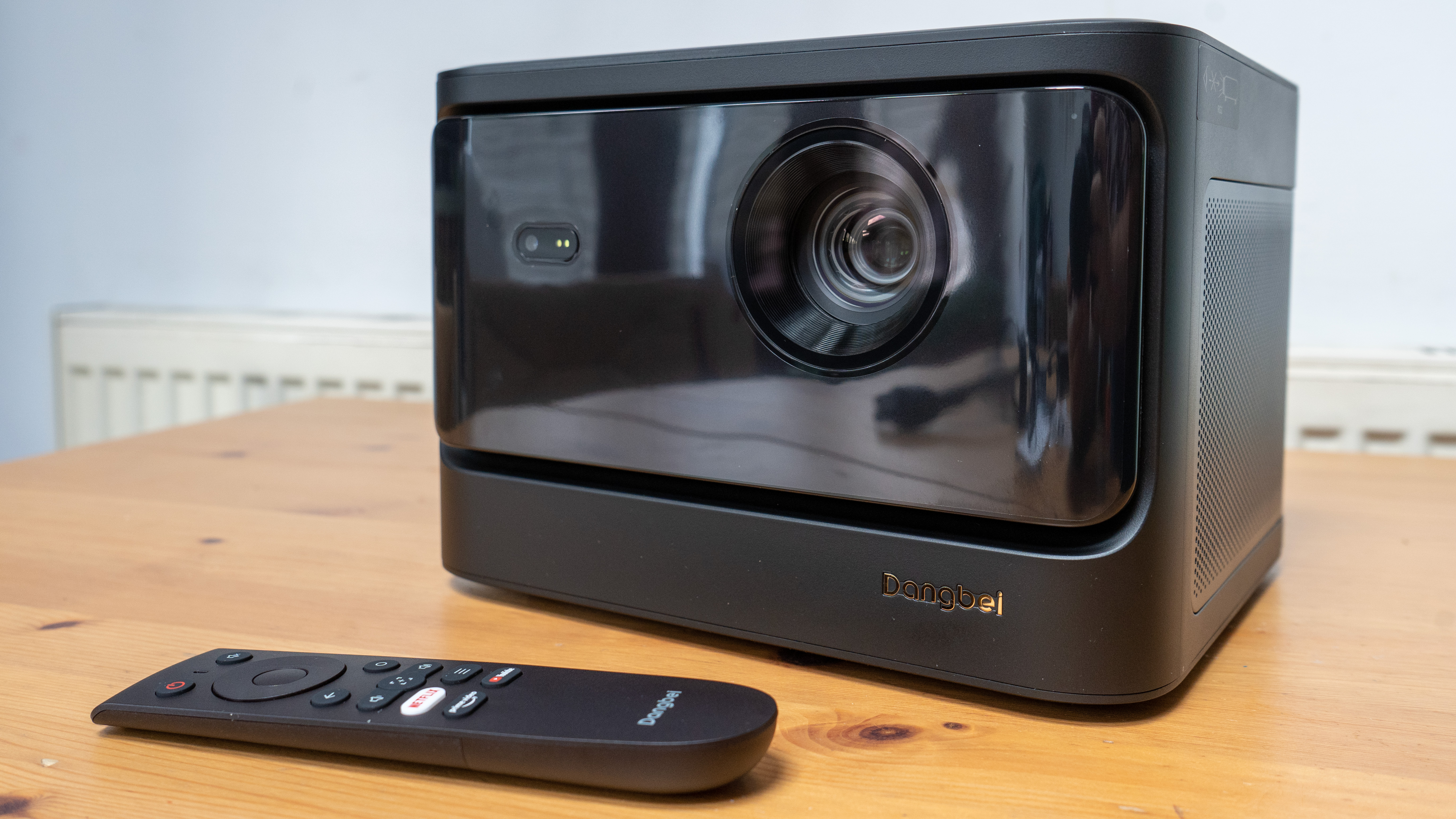
9. Dangbei Mars
Our expert review:
Specifications
Reasons to buy
Reasons to avoid
Impressively low fan noise and a reasonably bright image make this table-top projector feel like great value in either the 1080P edition we tested or its flagship 4K cousin. The throw of 120-inches at 3.37m (and up to 200") makes for a genuinely cinematic image and, for a portable device, the Dolby-friendly dual 10W speakers do a good job of filling the room with sound.
Built-in apps mean Netflix, Prime, and YouTube need no more than your Wi-Fi password and a few steps of setup to work, though some of the screen mirroring tools aren't wholly Apple-friendly. On the plus side, the Linux underpinnings are faster than, say, Android TV.
Auto setup uses Time of Flight AF and a CMOS sensor to for keystone adjustment, which can even be set to be triggered by the movement of the projector. Now that's portability.
Read more: my full Dangbei Mars review
FAQs
How much space do I need to a projector?
In most rooms, you’ll want at least three meters (ten feet) of space to cast a 100-inch display. If that’s not possible, consider an Ultra Short Throw projector. These sit up close to your projection screen (or wall), often less than 10cm (four inches), but use mirrors to throw a large projection. Remember, in all cases, image resolution will determined by the projector hardware in use.
Can projectors project photos?
Of course! Projectors are like any kind of display technology, in that any of its inputs or connectivity options can be used to play photos or videos from compatible devices. Many projectors will contain USB ports to plug in a flash drive, with basic smart platforms to help navigate folders containing photos and other files. Bluetooth connectivity in some models will allow you to display photos from smartphones, tablets, and other source devices through your projection too.
- See also Best digital photo frames
Best projector: UHP, Laser, or LED?
There are several lighting technologies that can be used to power a projector. UHP lamps are the closest thing to a standard lighting system for projectors, given their high brightness capability, but lamps only last a few thousand hours, and tend to degrade gradually over time, affecting the colour output.
LED lighting is gaining popularity within the projector market, especially in portable models, given how compact LEDs can be – note that, while LED models will last for much longer than UHP ones, though, brightness output tends to be comparatively lower.
Bigger spenders should consider the laser projectors in this guide, as they offer more vivid and consistent colour over a longer period of time (over 20,000 hours). The technology is more pricey, though is generally used in top-range, home cinema models.
Best projector: DLP or 3LCD?
There are two key projection technologies. DLP models use a digital micromirror device (DMD) allied to a spinning colour wheel to create images. They tend to be competitively priced and because they use a single device, can deliver very sharp pictures. However, that colour wheel can cause an artifact known as rainbow fringing (particularly on cheaper models), where colour flashes can be seen in areas of high contrast. If you specialize in monochrome, they may not be the best choice.
3LCD projectors use a trio of aligned LCD panels. These projectors give the most cinematic of images, with naturalistic color, but often don’t seem quite so sharp as DLP.
Do I actually need a screen for a projector?
Not really is the honest answer. Of course you'll get the best view if you project onto a dedicated projection screen, but if you have a white-ish wall that isn't too glossy it will work, but a polyvinyl or fabric screen will be the right color, shape, and reflectivity. Paint can reflect unevenly, with both glare from worn patches and not enough reflection overall for a good picture.
How do we test projectors?
When we review a projector, we test it against a fabric screen and a matt white wall to get an idea of how it looks. We like to view still images and settle in for a whole movie to see if any visual issues become a problem (for example, when testing the Dangbei Mars I watched Gremlins 2). I also have. a few scenes from movies which I know are challenging in different ways (color, motion etc.) that I watch with every projector.
Where appropriate, we like to use our 'coffee table test', finding how conveniently we can place the projector on a coffee table and aim it at our screen or wall – this is about checking the image size we get for the distance and how far we can push the coffee table to the side, a test of the keystone adjustment.
Obviously we also make sure we test any special or promoted features, like the software / network features, or obstacle avoidance.
Read more:
The best camera phones
The best monitors for photographers
The best digital photo frames
The best VPN
The best camera deals, reviews, product advice, and unmissable photography news, direct to your inbox!

With over 20 years of expertise as a tech journalist, Adam brings a wealth of knowledge across a vast number of product categories, including timelapse cameras, home security cameras, NVR cameras, photography books, webcams, 3D printers and 3D scanners, borescopes, radar detectors… and, above all, drones.
Adam is our resident expert on all aspects of camera drones and drone photography, from buying guides on the best choices for aerial photographers of all ability levels to the latest rules and regulations on piloting drones.
He is the author of a number of books including The Complete Guide to Drones, The Smart Smart Home Handbook, 101 Tips for DSLR Video and The Drone Pilot's Handbook.
